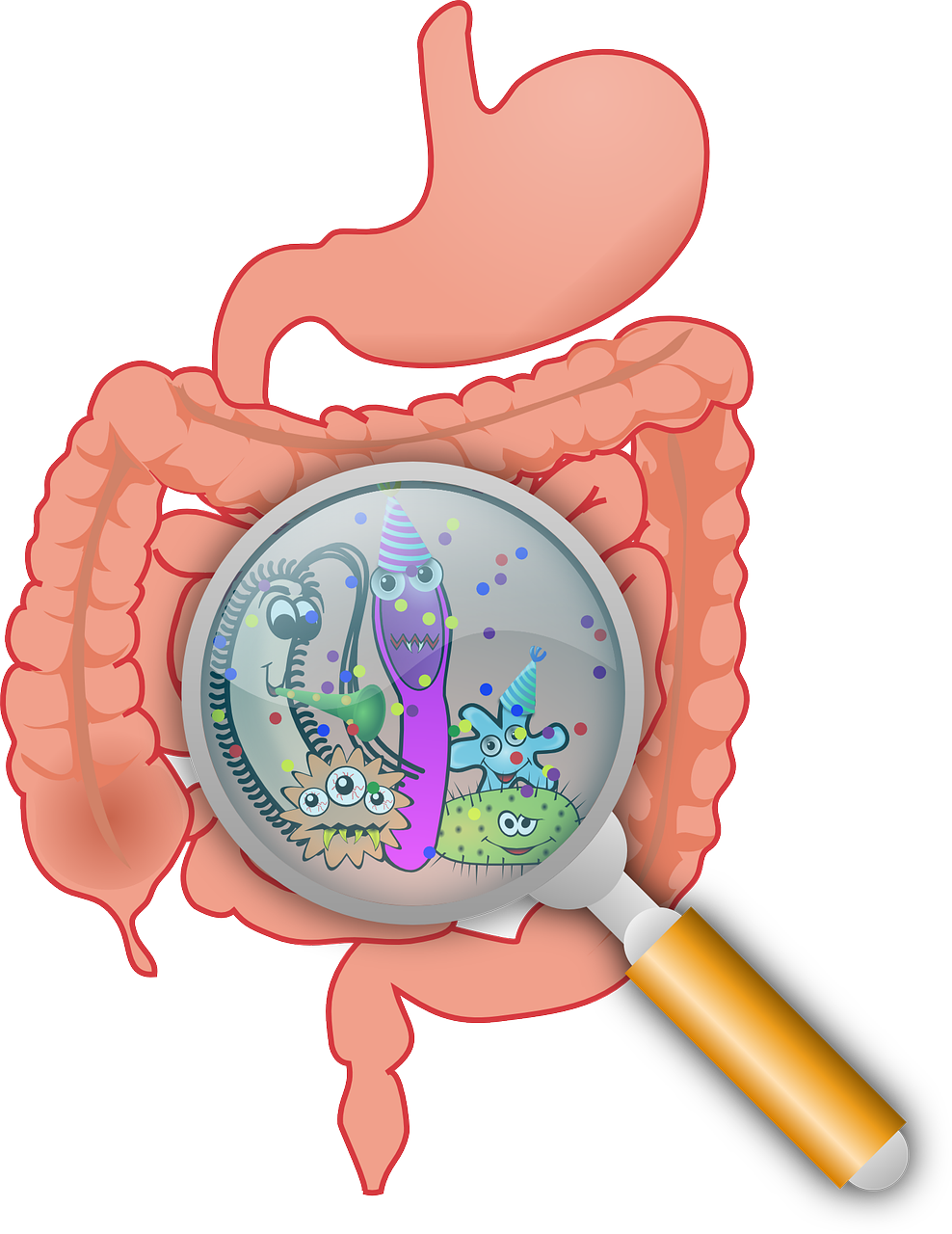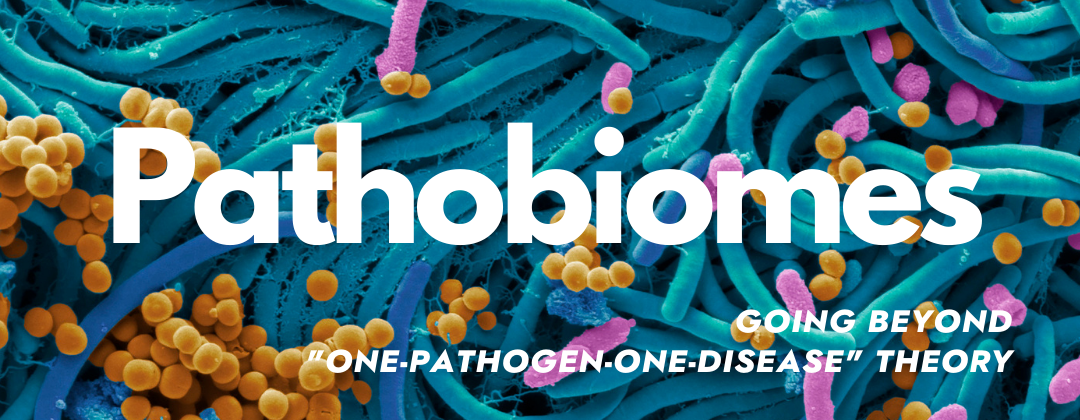Advances in DNA sequencing and imaging technology have allowed researchers to observe the diverse microbial communities, or microbiomes, present in various areas of the body. Our complex interrelationships with microbiomes are increasingly implicated in diseases affecting people and pets.
I have heard of a microbiome. What is a “pathobiome”?
Scientists’ understanding of pathogenesis, or the development of disease, has evolved considerably since Louis Pasteur first suggested that “particles” in the environment were responsible for food spoilage. Born from his research and findings from other researchers at the time, the original Germ Theory of Disease described infectious disease as a “one microbe – one disease” model.
It is now well-understood that this model is not applicable in many cases. Diseases often involve individual-based factors that influence their progression. This means genetic pre-dispositions, co-morbidities, and/or even the presence of certain bacteria can play a role.
A pathobiome occurs when a microbiome experiences a change in its bacterial population, or dysbiosis, that negatively impacts the patient’s health. The introduction of a pathogen, changes in diet, use of antimicrobials, environmental factors, and other elements can all cause this disruption to occur in areas of our body that are naturally inhabited by microbes. The development of a pathobiome may contribute to the onset, or worsening, of a disease and its associated symptoms.
Gut microbiomes
The gastrointestinal tract has been a major focus of microbiome research. The beneficial bacteria found throughout the GI tract, specifically in the large intestine or colon, primarily assist intestinal epithelial cells with digestion and absorption of certain molecules. Probiotics and prebiotics are often used to supplement the diets of individuals who require help establishing or maintaining a healthy composition of gut bacteria.

This is important because a disrupted gut microbiome, or gut pathobiome, can have devastating effects on the GI tract and impact other areas of the body. An example of this is C. diff, or Clostridioides difficile infection, often acquired by hospitalized patients who are immunocompromised or on long-term antibiotics. C. diff directly and indirectly causes GI symptoms, like severe diarrhea, due to the release of a toxin that destroys the natural microbial population and harms the cells lining the intestines.
A 2020 study described a distinct gut microbiome signature associated with patients experiencing persistent symptoms, such as fatigue, following treatment for Lyme borreliosis. Researchers indicated that this change was not caused by antibiotic use and was unique compared to the healthy control and intensive care unit (ICU) groups. More research is required to understand the pathophysiology, but this study provides early evidence that Lyme Borrelia infection could contribute to a gut pathobiome that causes chronic symptoms in a subset of patients.
Skin microbiomes
Skin has been another focus of microbiome research. The population of bacteria typically present do not cause an issue, but one change that allows a pathogen to take over can create a pathobiome that is harmful to the individual. A common example of this is MRSA.
Research suggests that skin is likely a niche for vector-borne bacteria like Lyme Borrelia and Bartonella. The classic EM rash associated with acute Lyme disease is an inflammatory reaction to Borrelia spirochetes migrating through the skin. There is evidence, however, that Borrelia species may remain in the dermis, causing persistent lesions that are uncharacteristic of Lyme-related skin manifestations and contain other species of bacteria.
Bartonella species infections have been correlated with skin-related symptoms, such as Bartonella-associated cutaneous lesions (BACL) that appear in neuropsychiatric patients. Advanced microscopy studies have also shown direct evidence of B. henselae in the affected tissue, but the mechanism of infection is unclear. Bartonella species may migrate there because damaged tissue is conducive to colonization, or their presence may cause a pathobiome to develop.
A recent study involving Galaxy scientists also found Bartonella species present in melanoma tissues. These findings beg the question: Is Bartonella there because of the harm the melanoma already caused, or can Bartonella species initiate and/or influence the progression of the tumor through pathobiome interactions?
References
Vayssier-Taussat, M. et al. (2014). Shifting the paradigm from pathogens to pathobiome: new concepts in the light of meta-omics. Frontiers in Cellular and Infection Microbiology 4, 29. 10.3389/fcimb.2014.00029 https://www.ncbi.nlm.nih.gov/pmc/articles/PMC3942874/ -review
Ericson, M. E. et al. (2021). Bartonella henselae detected in malignant melanoma, a preliminary study. Pathogens, 10(3), 326. 10.3390/pathogens10030326 https://www.ncbi.nlm.nih.gov/pmc/articles/PMC7998106/ – Bart and melanoma
University of Exeter. (2019, September 12). The ‘pathobiome’ – a new understanding of disease. Available at: https://phys.org/news/2019-09-pathobiomea-disease.html
Krezalek, M. A. et al. (2016). The shift of an intestinal “microbiome” to a “pathobiome” governs the course and outcome of sepsis following surgical injury. Shock, 45(2), 475-482. 10.1097/SHK.0000000000000534 https://europepmc.org/article/MED/26863118 – Gut microbiome to pathobiome
Riquelme, E. et al. (2019). Tumor microbiome diversity and composition influence pancreatic cancer outcomes. Cell, 178(4), 795-806. 10.1016/j.cell.2019.07.008 https://pubmed.ncbi.nlm.nih.gov/31398337/ – tumor microbiome
Nejman, D. et al. (2020). The human tumor microbiome is composed of tumor type-specific intracellular bacteria. Science, 368(6494), 973-980. 10.1126/science.aay9189 https://science.sciencemag.org/content/368/6494/973.full – tumor microbiome and specific bacteria
Kingery K. (2021, January 13). The cancer microbiome reveals which bacteria live in tumors. Available at: https://pratt.duke.edu/about/news/cancer-microbiome-atlas
Thursby, E. & Juge, N. (2017). Introduction to the human gut microbiota. Biochemical Journal, 474(11), 1823-1836. 10.1042/BCJ20160510 https://www.ncbi.nlm.nih.gov/pmc/articles/PMC5433529/
Morrissette, M. et al. (2020). A distinct microbiome signature in posttreatment Lyme disease patients. mBio, 11(5), e02310-20. 10.1128/mBio.02310-20 https://mbio.asm.org/content/11/5/e02310-20
Centers for Disease Control and Prevention. (2020, November 16). What is C. diff? Available at: https://www.cdc.gov/cdiff/what-is.html
Middelveen, M. J. et al. (2021). Dermatological and genital manifestations of Lyme disease including Morgellons disease. Clinical, Cosmetic and Investigational Dermatology, 14, 425-436. 10.2147/CCID.S299526 https://www.dovepress.com/articles.php?article_id=64527


